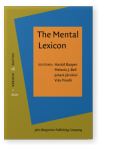Vol. 16:1 (2021) ► pp.165–198
Phonetic reduction and paradigm uniformity effects in spontaneous speech
Recent work on the acoustic properties of complex words has found that morphological information may influence the phonetic properties of words, e.g. acoustic duration. Paradigm uniformity has been proposed as one mechanism that may cause such effects. In a recent experimental study Seyfarth et al. (2017) found that the stems of English inflected words (e.g. frees) have a longer duration than the same string of segments in a homophonous mono-morphemic word (e.g. freeze), due to the co-activation of the longer articulatory gesture of the bare stem (e.g. free). However, not all effects predicted by paradigm uniformity were found in that study, and the role of frequency-related phonetic reduction remained inconclusive. The present paper tries to replicate the effect using conversational speech data from a different variety of English (i.e. New Zealand English), using the QuakeBox Corpus (Walsh et al. 2013). In the presence of word-form frequency as a predictor, stems of plurals were not found to be significantly longer than the corresponding strings of comparable non-complex words. The analysis revealed, however, a frequency-induced gradient paradigm uniformity effect: plural stems become shorter with increasing frequency of the bare stem.
Article outline
- 1.Introduction
- 2.Morphology and speech production
- 3.Paradigm uniformity
- 4.Methodology
- 4.1Data set
- 4.2Variables
- 4.2.1Response variable: Duration of stem
- 4.2.2Variables of interest
- 4.2.3Control variables
- 4.2.4Summary of variable distributions
- 4.3Modeling procedure
- 5.Results
- 5.1Categorical paradigm uniformity
- 5.2Gradient paradigm uniformity
- 5.2.1Testing the effects of different frequency measures on stem duration
- 5.2.2Controlling for word-form frequency
- 6.Discussion
- Acknowledgements
- Notes
-
References
